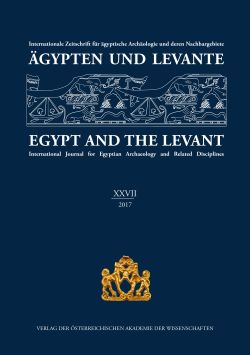
Ägypten und Levante 27, pp. 403-430, 2017/12/27
Internationale Zeitschrift für ägyptische Archäologie und deren Nachbargebiete
International Journal for Egyptian Archaeology and Related Disciplines

In the mid-6th millennium calBC, ceramics appeared for the first time in the Fayum and Delta of Lower Egypt. A southern Levantine origin for these ceramic types was proposed over fifty years ago by Jacob Kaplan (KAPLAN 1959) and several different cultural entities have since been considered as the possible origin, including the Yarmukian culture (EIWANGER 1984), the Qatifian culture (SMITH 1989), the Lodian (SHIRAI 2010), the Nizzanim and the Wadi Rabah culture (TASSIE 2014). This paper examines these five possible source cultures and reviews the archaeological data based on an absolute radiocarbon chronology. Preliminary results suggest that the Wadi Rabah culture played the most crucial role in the formation of the Neolithic of Lower Egypt, and that there were extensive cultural interactions between the Levant and Egypt. The interactions emerging in this period were embedded in an internationalism that connected most of the Near East. It can be envisaged that favourable climatic conditions in this period might also have enabled and facilitated interactions between the southern Levant and Egypt. The transregional interactions of the 6th millennium calBC can also be seen as a prelude to the better understood contacts of the Early Bronze Age, which also coincided with a climatic amelioration.
Keywords: Neolithic, Egypt, Wadi Rabah, trans regional interaction, climate